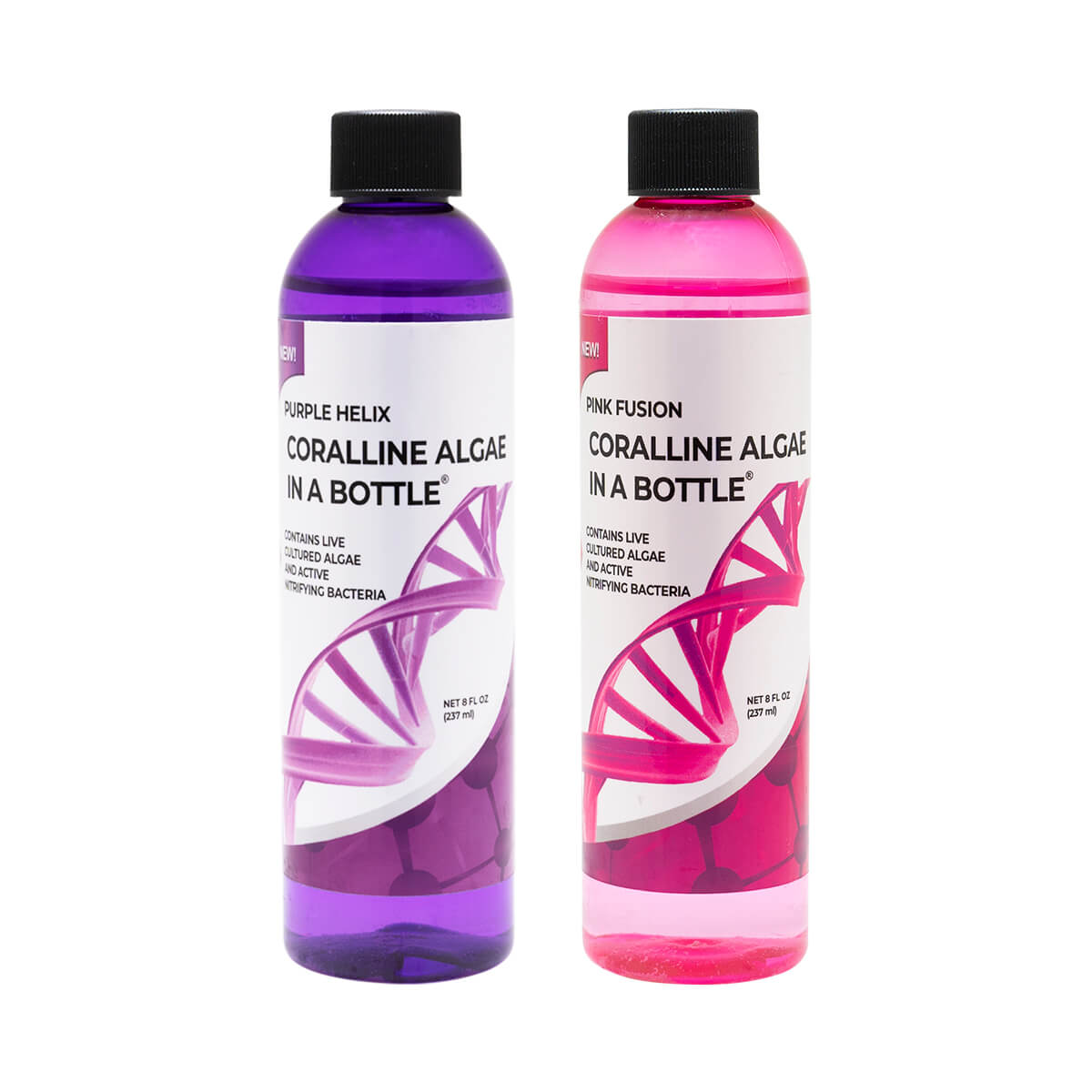Coralline Algae - Pink and Purple Helix







First you will want to turn off any filters, such as your sump pump, protein skimmer, and UV sterilizer if equipped. You will want to leave your powerheads on though, so as to help distribute the coralline algae.
Before introducing the coralline algae, shake the bottle vigorously, as some algae spores may have adhered to the inner walls of the bottle during shipping.
After shaking, pour the entire contents of the bottle into your saltwater aquarium. (If the bottle is cold, bring to room temperature).
Once you have emptied the contents of the bottle, refill the bottle about halfway with aquarium water before shaking and pouring again. We recommend doing this several times so as to introduce as many coralline algae spores as possible.
After you have finished, leave all of your filtration equipment off for a minimum of two hours so as to let the coralline properly distribute and settle.
 What are the best parameters to see growth?
What are the best parameters to see growth?

- Nitrates - 5 ppm or less.
- Phosphates - 0.25 ppm or less.
- Keep a stable pH level between 8.1-8.3
- Maintain a stable temperature between 78-81 degrees Fahrenheit.
- Lighting will be one of the biggest contributing factors to success! For your lighting cycle, we recommend 8-12 hours of a fluctuating day/night cycle and your intensity to remain moderate, not too high or low. Full spectrum (white), will yield the best results.


Related Articles
Coralline Algae: Signs of a Maturing Reef Aquarium
Coralline algae are one of the most recognizable signs of a stable and maturing saltwater aquarium. They grow in shades of pink, purple, lavender, deep red, and even dusty green, coating rock surfaces, powerheads, and overflow boxes with their hard, ...My tank is overrun with green hair algae, what can I add to help?
Both Tuxedo and Pincushion urchins are excellent solutions for green hair algae problems. Tuxedo urchins, in particular, add a vibrant splash of color to your tank, with varieties available in stunning shades of red or blue. They are slightly more ...Natural Ways to Combat Algae Blooms: The Role of Copepods and Clean-Up Crew
Algae blooms are a common and frustrating problem for saltwater aquarium enthusiasts. Whether you're just starting with a new tank or dealing with an established one, an algae bloom can quickly turn your tank from a clear, vibrant ecosystem into a ...Discover the benefits of OceanMagik Live Phytoplankton for reef aquariums. Learn how it supports coral health, combats algae, and enhances biodiversity with its 4-species blend
OceanMagik Live Phytoplankton – Your Secret Weapon for a Thriving Aquarium Phytoplankton plays a crucial role in ocean ecosystems, and it should be an essential part of your aquarium too. For reef hobbyists, the goal is to replicate the ocean as ...Urchins
Sea urchins are considered by marine ecologists to be keystone species in tropical seas, as they promote the development of reef-building corals via the intense grazing pressure they exert on benthic algae. As such, they are an indispensable ...